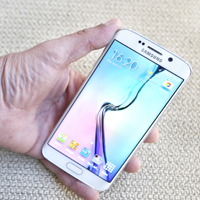With the release of the 3GPP 13 standard just a couple of months away, we take a look at what’s happening in the global marketplace with regards to LTE-U and LAA.
LTE-U proposes to make use of the unlicensed spectrum to accommodate the ever increasing bandwidth of all of our devices. Although this sounds like a logical solution, the unlicensed spectrum is widely used by Wi-Fi, and this has caused some controversy within the industry.
Why is there a drive for LTE-U ?
LTE-U will allow mobile network operators (MNOs) to boost their coverage by using the 5GHz band. It will allow them to increase their data speeds over short distances, and improve their capacity. It promises a more responsive experience for subscribers when using their mobile data, reducing the need to switch over to Wi-Fi, particularly when indoors.
What will 3GPP 13 mean for LTE-U & LAA?
LTE-U and LAA use similar technology to utilise the unlicensed spectrum. The key difference between LTE-U and LAA are the standards with which they are governed. LTE-U has been designed outside of standard bodies, whereas LAA has been designed in line with the 3GPP standard. LAA follows a protocol called ‘Listen before talk’ or LBT for short. This protocol ensures that the channels are clear before sending data via LAA, safeguarding fair usage for Wi-Fi and LAA. This protocol is mandatory in the European Union and Japan.
The next release of the standard (3GPP 13) is due in March 2016, just a couple of months away. It will provide a ‘set of mandatory features/parameters that enable effective and fair coexistence between Wi-Fi and LAA.’ This will input into regulatory discussions, and it is predicted that the first commercial instances of LAA could be expected as early as 2017.
What is happening in the marketplace?
In Europe, which is governed by the 3GPP standard, Qualcomm and Deutsch Telecom have completed initial tests of LAA, with positive results. They have reported an increased network capacity whilst at the same time demonstrating fair coexisting with Wi-Fi. The results from the trial will help verify the technology, and likely pave the way for roll outs across Europe.
Across the pond in the USA, Qualcomm has also been granted permission by the Federal Communications Commission (FCC) to carry out a trial of LTE-U in partnership with Verizon at two different sites. Although the USA isn’t governed by the 3GPP standard, any LTE-U devices will still require authorisation by the FFC before they can be rolled out commercially. This is a big milestone for LTE-U in the USA, and may well be the first of many trials to progress the technology. And it’s a similar story in China, where Ericsson and Qualcomm demonstrated peak data speeds of 300Mbps at a conference at the end of 2015.
What does the future hold for LTE-U and LAA?
With a number of initial trials suggesting that LTE-U and LAA can exist in the 5GHz spectrum alongside Wi-Fi, the future is looking positive. It is likely that the next steps will involve larger scale trials of both LTE-U and LAA before full commercial rollouts will be granted. With the ever increasing demand for greater coverage and increased speeds, LTE-U looks like it is proving to be a viable option. What is clear, is that operators making the jump to LTE-U will need to be considerate toward Wi-Fi and ensure efficient management of their network and services to do so.
One final thought, with LTE driving improved voice quality, improved data speeds, and now LTE-U enhancing the indoor experience, will fixed line communications actually become obsolete in the not so distant future?

